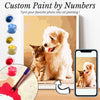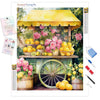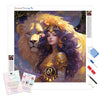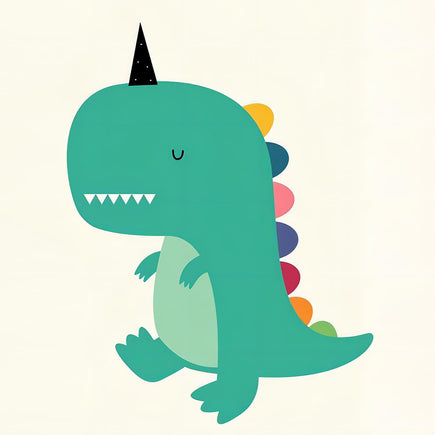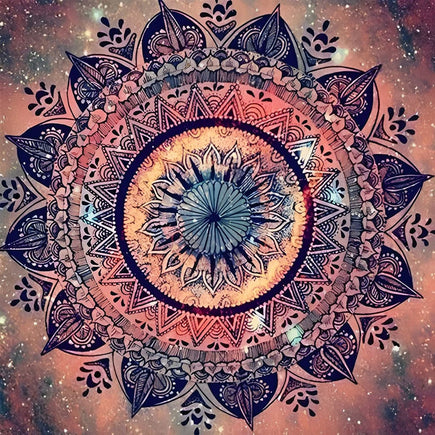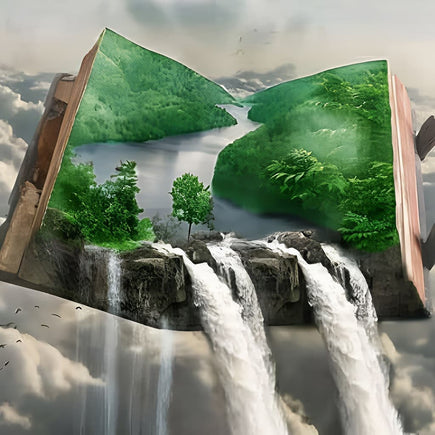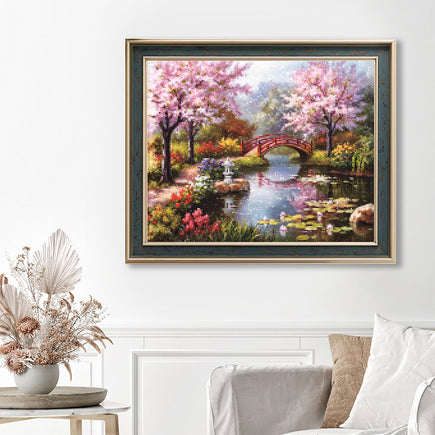Preparing Your Canvas: How to Flatten a Diamond Painting?

There's nothing more satisfying than starting a diamond painting project with a perfectly flat canvas. However, many diamond painting kits arrive rolled up or with creases, which can make it tricky to start your artwork. If you're wondering how to flatten your diamond painting canvas quickly and effectively, this guide is here to help. Let's look at some simple yet effective methods to get your canvas flat so you can enjoy your creative process without hassle.
1. Lift and Smooth the Clear Film
The effective way to help flatten your canvas is to lift the clear protective film and then lay it back down, smoothing out any air bubbles as you go. This simple action helps to release trapped air and can significantly reduce creases, making the canvas flatter overall.
2. Lay It Flat with Heavy Objects
One of the simplest ways to flatten your diamond art canvas is by using heavy objects. Here’s how you can do it:
- Unroll Your Canvas: First, unroll your diamond art canvas and place it on a flat surface like a table or the floor.
- Place Heavy Objects on Top: Lay some heavy, flat objects—like books, a cutting board, or a clean box—over the canvas. Ensure that the weight is evenly distributed so that all canvas parts are pressed down.
- Leave It Overnight: Leave the heavy objects on the canvas for at least 24 hours. This should help to remove most of the creases and flatten them out.
This is a painless method, especially for canvases that have a slight crease or are not rolled too tightly. Depending on the size of the canvas, smaller canvases can be placed in a portfolio or under a book. Larger canvases are recommended to be placed under a mattress to flatten them out, and then they can be hung in a closet using wire hangers and binder clips.
3. Use a Rolling Pin
A rolling pin can be an incredibly effective tool for flattening a diamond art canvas.
- Unroll and Position: Lay the canvas flat on a smooth surface.
- Roll Over the Canvas: Take a rolling pin and gently roll it over the entire surface of the canvas, applying light to medium pressure.
- Focus on Creased Areas: Pay extra attention to areas that have more creases or folds. The rolling pin helps push out air pockets and flatten the adhesive layer, making it easier to work with.
Tips: If you don't have a rolling pin, you can use a sturdy cylindrical object like a bottle or even a can of food instead!

4. Iron with Caution
Ironing can be an effective way to flatten a diamond art canvas, but it should be done with caution to avoid damaging the adhesive.
- Set the Iron to Low Heat: Set your iron to a low heat setting without steam.
- Use a Protective Cloth: Place a thin cloth or towel over the back of the canvas (not on the adhesive side!).
- Iron Gently: Iron the cloth in gentle, circular motions over the creased areas. Make sure not to leave the iron in one place for too long, as excessive heat can damage the adhesive layer.
This method works well on particularly stubborn creases, but must be handled with care and make sure it's not the glue side and that no drills are placed because they will melt.

5. Reverse Rolling
Reverse rolling is another easy way to flatten your canvas.
- Roll in the Opposite Way and Smooth: Roll the canvas in the opposite direction to how it was folded, then pull back the clear cover halfway and flatten it out gently. Make sure not to remove the cover completely—smooth one half first, then the other.
- Secure with Rubber Bands: Use rubber bands to hold the canvas in place for a few hours.
- Unroll and Flatten: After a few hours, unroll the canvas, and it should be significantly flatter.
This method is great for canvases that are not too tightly rolled and helps to ease out the natural curl.
6. Use a Light Pad and Clips
A light pad can also help with flattening while you work.
- Lay the Canvas on the Light Pad: Place your diamond art canvas on top of a light pad.
- Use Clips to Secure: Secure the edges of the canvas to the light pad using clips. The light pad's surface provides even pressure, and the clips help hold the canvas in place, gradually flattening it as you work.
- Work in Sections: As you continue working, the canvas will naturally become flatter, making it easier to handle.
This method is especially useful if you plan to work on your painting while flattening it.

7. Use the Finished Diamond Painting Itself
Once you've completed part of your diamond painting, the weight of the drills can help flatten the rest of the canvas.
- Start Placing Drills: Begin working on a section of your canvas. The weight of the drills will help flatten the canvas as you progress.
-
Use a Roller: After placing the drills, use a roller to press them down. This will not only secure the drills but also help flatten the canvas further.
This method is ideal for those who prefer to flatten the canvas while working rather than before starting.
Flatten Your Canvas for a Smoother Diamond Painting Experience
Flattening a diamond painting canvas is an important first step, ensuring that your crafting experience will go well and be enjoyable. Any of the methods above works quite well to get your canvas ready for painting, depending on the condition of your canvas and your preferences. Whether you use heavy books, a rolling pin, an iron, or just work in sections, having a flat canvas makes the entire process much easier and more satisfying.
Just remember that patience is a virtue, and flattening might be a wee bit time-consuming, but totally worth every ounce of effort for that lovely, polished finish. With your canvas now ready, let the brilliance of diamond painting amaze you and create magic!


